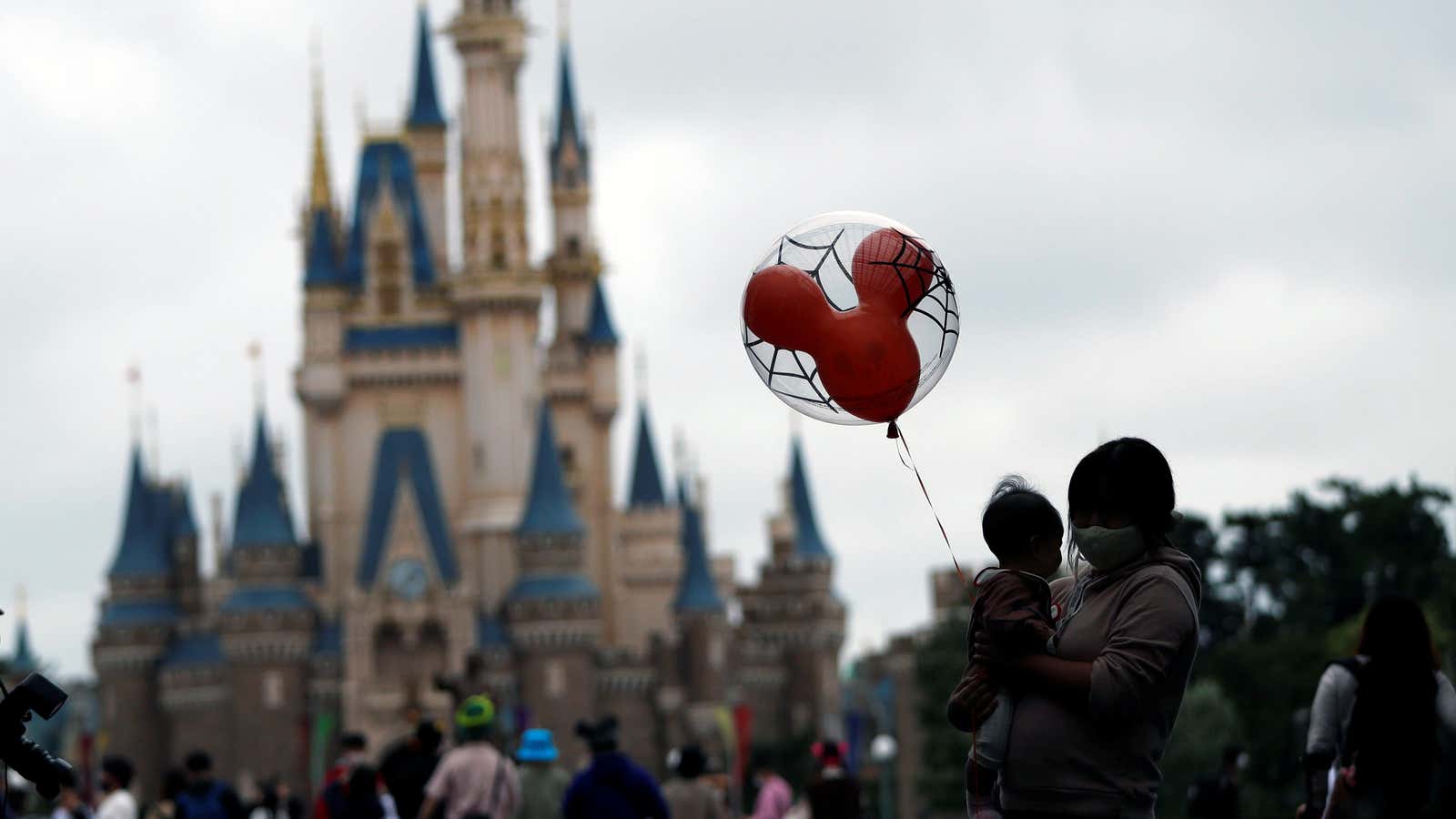Disney’s theme parks division has long been one of its most lucrative businesses. Now, after years of reliably churning out huge profits, it’s been annihilated in the span of a few months by the coronavirus pandemic.
Yesterday, the company announced it was laying off 28,000 employees at its US theme parks. Almost a third of Disney park workers, many of whom had been on furlough since April, are affected. Disney World in Florida reopened to limited capacity in July, while Disneyland in California remains closed indefinitely due to state mandates.
Disney blamed the decision in part on California’s “unwillingness to lift restrictions that would allow Disneyland to reopen.” But even if it were to open its doors again this year, it may not substantially improve the brutal accounting the company faces.
In August, Disney reported its first quarterly loss since 2001, losing nearly $5 billion. (It profited $1.4 billion in the same quarter in 2019.) Its theme parks were mostly responsible: They lost $2 billion in operating income that quarter, while every other segment posted gains—even the company’s movie studio, which has also been hit hard by the pandemic.
While Disney’s parks continue to struggle due to closures and little demand, its other businesses are doing okay (relatively). Its TV segment—the company’s other core profit maker—boasted over $3 billion in operating income last quarter, thanks to the return of live sports to ESPN and, subsequently, higher advertising revenues. Its movie studio generated almost $700 million in profit, up slightly from the previous quarter as more theaters reopen. And its streaming service, Disney+, is quickly growing, though it continues to operate at a loss, as most new streaming services do initially.
At least with its movie business, Disney has some recourse when theaters are closed. It can release some films on Disney+ for an extra fee (like Mulan) or free to existing subscribers (like the Hamilton adaptation). And while movies often get the headlines, they are a much smaller part of Disney’s business than its theme parks.
There is no real substitute for a closed theme park. Disney can’t recoup those lost profits. In a normal quarter, Disney’s theme parks profit between $1 billion and $2 billion. This year to date, they have lost money. When the company next reports its financials in November, the picture could look even bleaker.
Even when Disneyland reopens and Disney World returns to normal operations, consumers may feel uncomfortable traveling to the Magic Kingdom to stand in lines and bump elbows with other tourists. It may not be until a vaccine is deemed effective—and widely used—until the parks resemble what they were like before the pandemic. Disney’s theme park problem was caused by the virus, but it could also outlast it.
